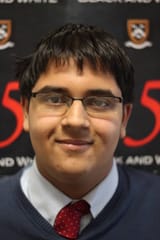What is the best format?
The ICC has been searching for the perfect World Cup format for years

If there is one thing that can be said about the ICC Cricket World Cup, it’s that over the years, the International Cricket Council (ICC) themselves have been very unsure over what the best format is. A large amount of this has been down to the debate over how many teams there should be in the World Cup. The governing body is keen to downsize, whereas the Associate nations are, predictably, not.
The format has varied widely over the various editions of the World Cup, with varying degrees of success. The original format of the World Cup, which pitted 10 teams in two groups of four with the top two progressing to the semi-finals, was viewed as successful. It lasted just over a fortnight. However, this format is not viable now, as there are more than eight Test nations.
The format of the 1992 World Cup has been widely accepted as very successful (even if the rules weren’t – the rain rule proved to be very controversial). It had nine teams who all played each other in a league. Semi finals and a final would follow. This is the sort of format that the ICC wants to implement, but it has its drawbacks. The obvious one being that it would result in the removal of the Associate nations from cricket’s premier tournament. The Associate nations view their participation in these tournaments to be crucial for their boards to thrive financially. A knock on effect of boards earning less money is that grass roots cricket in the countries will suffer. And we all want younger players to be playing cricket.
So, based on the assumption that keeping the Associate Nations is a good thing, what other formats would be better? Personally, I quite liked the 2003 format (which had two groups of seven and a second group stage called the Super Sixes), but I understand where people are coming from when they say that it felt quite long and bloated.
The ICC responded with the 2007 World Cup, but that proved to be a financial disaster. In the 2007 World Cup, the teams were split into four groups of four, with the top two from each progressing to a Super Eights stage. But what the ICC hadn’t considered were the ramifications of the big commercial teams being knocked out. Whilst I appreciate that this is a risk no matter what the format, it is far more likely in a group of four than a group of seven. India lost to Bangladesh, and Pakistan lost to Ireland. Both were knocked out, and the public had to deal with two weeks of watching (with all due respect) two minnows in the Super Eight stage. Unsurprisingly, ticket sales slumped.
The format for 2011 (and 2015) sees two groups of seven again, but with the ill-fated super stages axed once and for all. Instead there are Quarter Finals before the traditional semi-finals and Final. Again, I have to say that I quite like the format. Again, I also have to say that others find it very long.
So, what is the best format? Well, in my point of view, the ICC should take a leaf out of their book for the Twenty:20 World Cup. In that, there are sixteen teams – the nine Test nations and eight Associate nations. The bottom ranked eight teams have a preliminary stage with the top two sides qualifying for the Super Tens, which is effectively the remaining ten teams playing in two groups of five. If the preliminary stage was to be a knockout tournament then the length of the overall tournament will be significantly shorter, while the Associate nations will also get their day in the sun.
And most importantly, instead of arguing, we can all just get on with the cricket.










